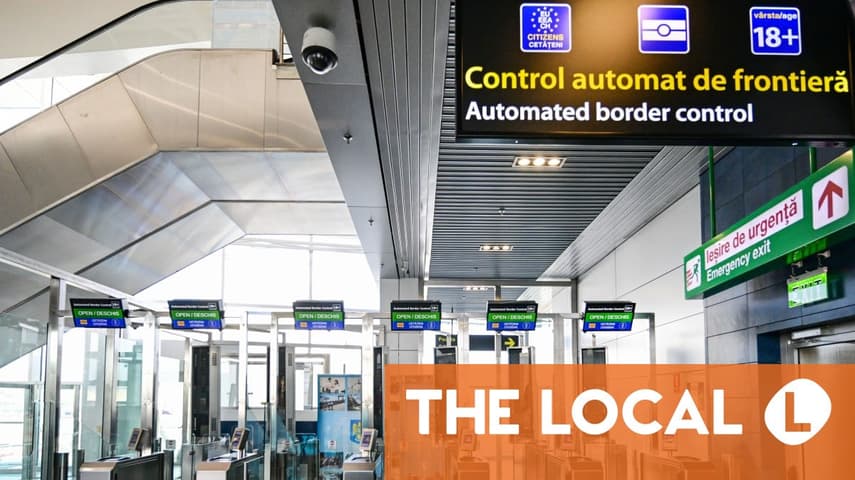The EU’s biometric EES checks has been designed to record the details of all third-country nationals entering and exiting the European Union – that is, all non-EU or Schengen Area citizens – although non-EU residents living in EU / Schengen countries and those travelling on visas are exempt.
For air passengers, alongside flight and baggage data, the checks will contain biometric information such as fingerprints, facial photographs, and passport details from the RFID chips included in the document.
It has been designed primarily to provide a better picture of the number of travellers overstaying the Schengen area’s 90-day rule, a perennial issue for EU states. It will also help to combat terrorism and organised crime by flagging individuals with criminal or terrorist convictions and notifying authorities.
The current system of rubber stamps on a page in your passport will be replaced by an automated scan.
Ireland and Cyprus are the only EU countries who won’t apply EES but their citizens will nevertheless be exempt. Switzerland and Norway are among the 29 countries who will be part of the EES system.
Pre-flight
It’s already the case that airline passengers have to provide certain information to their airline before they fly such as their name, date of birth and passport number – this is known as Advanced Passenger Information (API).
Although border force officers conduct in-person passport checks on arrival, airlines also have a responsibility not to allow ineligible passengers to board the plane – for example people who don’t have a valid passport. Airlines can be fined if their allow ineligible passengers on board, which is why gate checks are strict.
Advertisement
Because EES requires extra information, it seems likely that the pre-flight API required by your airline will become more detailed – and could also include your residency status (ie if you have a residency card or long-stay visa for an EU country).
Airlines will be required to get verification from the EES system before they allow each passenger to board – something that airlines are worried about (see below).
How will the EES work at the airport?
Remember EES checks are only when you are crossing an external Schengen border – so if you fly in from the US to Germany and when you leave the Schengen area. If during the trip you take another flight within the Schengen area – Germany to Sweden for example – you won’t need to do the EES checks.
As outlined above, it’s likely that passengers will be required to provide extra data for EES checks prior to travel – such as basic personal information, reason for travel etc. An EU app is being created and currently being tested at Stockholm airport that will allow for EES registration.
However the biometric data – fingerprints and facial scans – must be provided in person in the presence of a border guard, so will have to be done on arrival.
Advertisement
Once arriving in an EU member state or Schengen Area country from the outside, travellers must pass through checks at the airport, before they cross the border into their destination country.
This will be done at electronic gates or ‘e-gates’.
The first time a traveller enters an EU country after the EES is established, they must be fingerprinted, have their photograph taken, and have their passport details read.
This registration process will take place at several purpose-built kiosks in the airport arrival area. Passengers will scan their own documents and share their biometric data, plus answer a few necessary questions, under the supervision of border security officers.
The process is expected to take between ninety seconds and two minutes per person.
Once travellers have had their fingerprints and photographs taken, they will be valid for three years, and the full process will not need to be repeated.
However, if a traveller receives a new passport during that time, they will need to have new fingerprints and photographs taken.
Advertisement
Will it affect travel plans and airport queues?
While the EU has stated that there shouldn’t be any significant delays at airports, others have expressed concerns that travellers could face long queues.
The British travel association ABTA warned that travellers could be held up at kiosks for several minutes.
Concerns have also been voiced that efforts to communicate what the new system means have not reached the public—a study carried out in April found that two-thirds of adults across the UK are unaware of the system.
Airlines are also concerned about the system for people who are exempt from EES registration – such as people who have a residence permit or long-stay visa for an EU country.
According to the International Air Transport Association, these groups will have to indicate on their Advance Passenger Information that they are exempt, and then have their visa or residency card checked at the boarding gate, which could add significant time to boarding.
No more last minute flights?
As well as added complexity and time for the boarding process, airlines say that this, could spell the end of last-minute flights.
Airlines will be required to verify before departure the travel eligibility of passengers by sending verification queries to the EES system. This will respond whether they are “OK” or “NOT OK” for boarding. Airlines will be liable if they allow non-compliant passengers on board.
The IATA has raised the alarm about the reliability of the system, as well as the time required to get advance verification.
The deadline – which has been reported as being up to 48 hours before take-off “is too long” and “will preclude late ticket sales,” according to a document submitted by Ryanair Holdings plc, the parent company of Ryanair, Buzz, Lauda and Malta Air, to the UK’s House of Commons European Scrutiny Committee.

